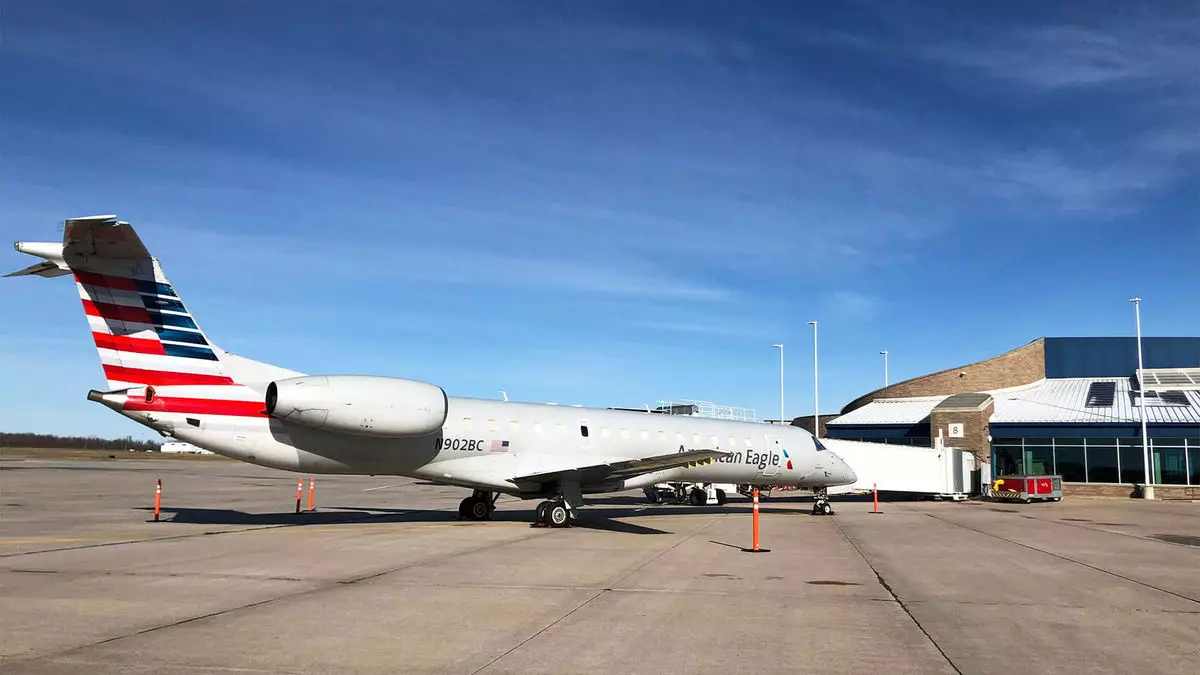The landscape of air travel in the United States has faced unprecedented challenges due to the pandemic, leading to significant operational declines in many small and medium-sized airports. Appleton Airport, located in northeast Wisconsin, exemplifies this trend. However, recent developments have set the stage for a remarkable recovery in air service, positioning Appleton as a beacon of hope for regional airports struggling to regain their footing in the aviation industry.
Following the pandemic, Appleton Airport, like many others, experienced a dramatic reduction in air traffic. Major airlines, including American, Delta, and United, faced severe operational difficulties stemming from a critical pilot shortage, resulting in grounded regional aircraft and diminished service. This downturn impacted the airport’s connectivity, which is crucial for the approximately 250,000 residents of the Appleton metro area, leading to a pronounced sense of isolation as direct flight options dwindled.
Despite this backdrop, a transformative shift occurred in June when American Airlines launched its inaugural route to Dallas-Fort Worth using an American Eagle-branded regional jet. This new direct line stood as a significant milestone for Appleton, marking a resurgence in air travel and restoring hope for the community’s connectivity. Alongside this, the airline also reinstated its service to Charlotte, reflecting a broader trend of gradual recovery at the airport.
The revival of air service in Appleton is underscored by impressive metrics. After experiencing a staggering reduction in major airline flights—31% between October 2021 and October 2023—the airport is now witnessing a dramatic turnaround. Data indicates that the current flight count from American, Delta, and United has rebounded to a remarkable 92% of pre-pandemic levels. Furthermore, the deployment of larger regional aircraft has inflated seat availability on major airlines by nearly 6% compared to October 2021 figures.
Jesse Funk, the airport’s air service and business development manager, emphasizes the positive implications that enhanced connectivity brings to both business and leisure travelers among the Appleton community. “Increased competition encourages lower prices and efficiency for our residents,” Funk stated, highlighting that the return of air service not only restores lost convenience but also revitalizes the local economy through improved accessibility.
Appleton’s trajectory is not an isolated phenomenon; it mirrors a growing trend seen across numerous small to medium-sized airports nationwide. Airlines are gradually closing the chapter on the pilot shortage that plagued the industry, rekindling their capacity for regional flying. American Airlines, for instance, has increased its regional flight count by an impressive 14.9% compared to the previous year. United Airlines and Delta have followed suit, with increases of 13.9% and 9.8% respectively.
Delta’s President, Glen Hauenstein, conveyed optimism during a Q3 earnings call, noting that the previously stringent pilot constraints are easing. With utilization rates improving from 40% to nearly 70% of Delta’s regional fleet, the airline is optimistic about returning to full operational capacity comparable to 2019 levels by next summer.
Despite the encouraging news regarding increases in flight operations and new routes, there remains a cloud of uncertainty regarding the future of regional airlines. The slow recovery and growth of regional flying is partly attributed to the strategic shifts of larger carriers, such as Delta and United, who aim to operate a higher percentage of flights with more profitable mainline aircraft.
Data indicates a lingering deficit in regional aircraft flights, with a reported 25% decrease in flights compared to October 2019. The Regional Airline Association has expressed concern over this troubling trend, particularly for the smallest airports, which have seen reductions in service over the past year. The potential for another pilot shortage looms as the aviation industry adjusts to the dynamics of post-pandemic recovery.
Looking Forward: A Vision for Continued Growth
While Appleton Airport has achieved notable successes lately, the drive for continued growth remains a priority. Jesse Funk candidly expressed that the airport is grateful for recent advancements, but there is a persistent search for further improvements in air service. This proactive mindset among airport officials signals a commitment to enhancing connectivity for the Appleton community, paving the way for a resilient and interconnected future.
As Appleton Airport continues its journey toward reinstating its air travel services, the story of its resurgence encapsulates not just local perseverance but also reflects a broader narrative within the aviation industry. By harnessing newfound momentum and addressing lingering challenges, Appleton aims to thrive in a landscape that is still evolving, demonstrating that there is always room for optimism in the world of air travel.


Leave a Reply